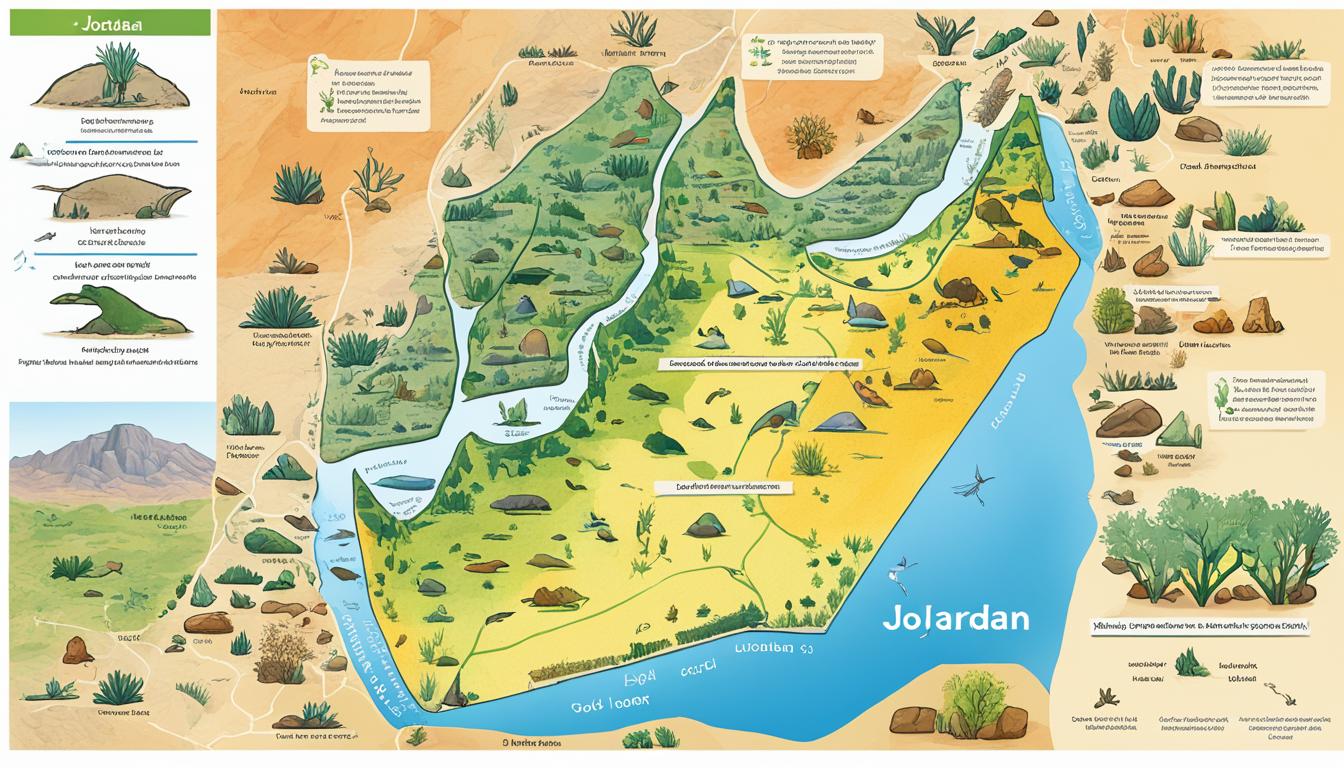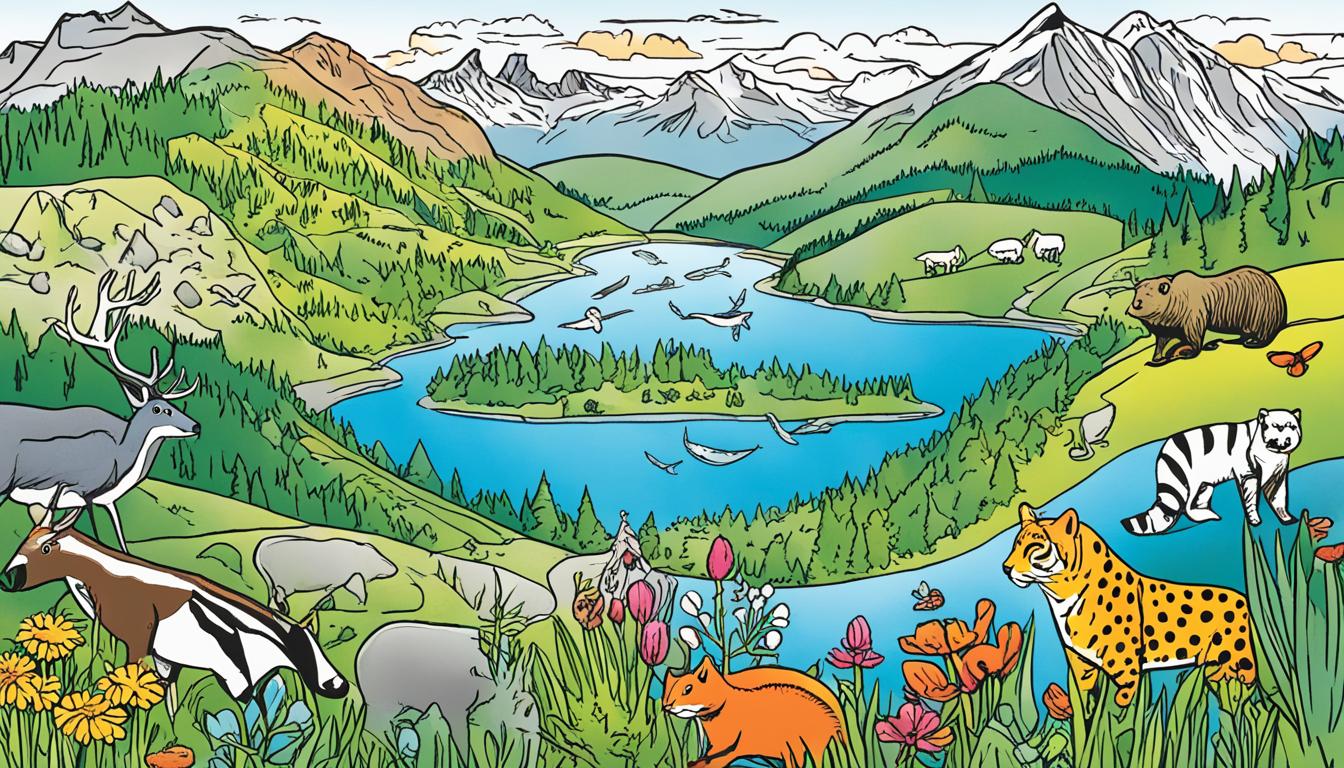Biodiversity and Disease Resilience: How Ecosystems Can Shield Us
Biodiversity, ecosystem health, and disease resilience are closely intertwined, playing a crucial role in protecting both human and planetary well-being. The interconnectedness of biodiversity and human health is evident in the current global context, as the erosion of biodiversity has contributed to the severity of the COVID-19 pandemic and the rise of non-communicable diseases.
In this article, we will explore the importance of biodiversity for human and planetary health, the link between biodiversity and disease resilience, the impact of industrial agriculture on biodiversity and health, and the role of collaboration in building climate resilience and managing natural resources.
Through sustainable agricultural practices, conservation efforts, and collaborative approaches, we can preserve and enhance biodiversity, fostering the resilience of ecosystems and safeguarding the health of future generations.
Key Takeaways
- Biodiversity and ecosystem health are vital for disease resilience.
- The globalized industrial food system has negatively impacted biodiversity and contributed to the severity of the COVID-19 pandemic.
- Maintaining biodiversity is crucial for managing disease outbreaks and protecting human and ecosystem health.
- Industrial agriculture has detrimental effects on biodiversity and human health.
- Local communities and small farmers practicing biodiversity-based organic agroecology are more resilient during crises.
The Importance of Biodiversity for Human and Planetary Health
Biodiversity plays a crucial role in maintaining the health of both humans and the planet. It encompasses the incredible diversity of ecosystems, soil, plants, animals, and their interactions. However, the globalized industrial food system has had a detrimental impact on biodiversity, resulting in serious consequences for human health and planetary well-being. It is vital that we recognize the significance of biodiversity and shift towards preserving and enhancing it for the sake of ecological and human health.

The globalized industrial food system, characterized by its focus on uniformity and centralization, has led to a decline in biodiversity. This loss of biodiversity has contributed to the rise of non-communicable diseases, such as obesity, diabetes, and cardiovascular diseases. Moreover, the reduction in biodiversity has also played a role in the severity of the COVID-19 pandemic. The destruction of natural habitats and the encroachment upon wildlife populations have increased the risk of zoonotic disease outbreaks, like the one we are currently facing.
“Biodiversity is not just about saving species but also about preserving the intricate web of life that sustains us all.”
Preserving biodiversity is not only essential for preventing disease outbreaks but also for ensuring the resilience of ecosystems and the provision of vital ecosystem services. Biodiversity supports soil health, aids in nutrient cycling, enhances pollination, and contributes to climate regulation. It is also crucial for the development of new medicines and the discovery of innovative solutions for sustainable agriculture. By valuing and protecting biodiversity, we can create a healthier future for both humans and the planet.
The Link Between Biodiversity and Disease Resilience
Biodiversity plays a crucial role in disease resilience. A diverse ecosystem with a variety of species can reduce pathogen dynamics by providing different hosts for pathogens, preventing the spread of diseases. The loss of biodiversity can increase disease transmission as the absence of certain species disrupts ecological interactions and allows pathogens to proliferate. Maintaining biodiversity is essential for managing disease outbreaks and protecting human and ecosystem health.
Biodiversity supports disease resilience through various mechanisms. Firstly, a diverse community of species ensures a range of hosts for pathogens, reducing their ability to spread and establish in an ecosystem. This concept, known as host diversity, acts as a natural buffer against disease transmission. For example, in a biodiverse forest ecosystem, different tree species can act as hosts for various pathogens, preventing the dominance of one pathogen and reducing the risk of widespread disease outbreaks.
Research has shown that areas with higher biodiversity have lower rates of disease transmission. For instance, studies conducted on coral reefs have demonstrated that reefs with greater species diversity are less susceptible to coral disease outbreaks. The presence of different coral species provides a variety of microhabitats and ecological niches, limiting the spread of pathogens and enhancing the overall health and resilience of the reef ecosystem.
Furthermore, the absence of certain species due to biodiversity loss can lead to ecological imbalances, creating favorable conditions for pathogens to thrive. When certain species that act as natural predators or competitors of pathogens are removed, the pathogens can multiply unchecked, resulting in heightened disease transmission. This disruption of ecological interactions highlights the importance of maintaining a diverse and interconnected web of species to prevent disease outbreaks.
Implications for Disease Management
The link between biodiversity and disease resilience has significant implications for disease management strategies. Protecting and restoring biodiversity in ecosystems can contribute to the prevention and containment of disease outbreaks. Conservation efforts should focus on preserving habitats and ensuring the survival of diverse species, especially those that play key roles in regulating pathogen dynamics.
In addition, land-use practices that support habitat restoration and promote biodiversity, such as agroecological farming methods, can contribute to disease resilience. By maintaining diverse crop systems and minimizing the use of agrochemicals, farmers can create environments that are less favorable for pathogen proliferation.
| Disease Management Strategies | Benefits |
|---|---|
| Conserving biodiversity through protected areas and habitat restoration | Preserves natural ecological interactions and reduces disease transmission |
| Implementing agroecological farming practices | Creates diverse crop systems that are less susceptible to pathogen outbreaks |
| Educating communities about the importance of biodiversity for disease resilience | Promotes awareness and supports collective action for biodiversity conservation |
The Impact of Industrial Agriculture on Biodiversity and Health
Industrial agriculture has had significant implications for both biodiversity and human health. The widespread use of biodiversity-harming agrochemicals, such as pesticides and herbicides, has led to the decline of various plant and animal species. These chemicals can contaminate soil, water, and air, negatively affecting the overall ecosystem health.
Furthermore, the push for seed uniformity in industrial agriculture has resulted in the loss of crop diversity. Farmers often rely on a handful of high-yielding, genetically modified crops, leaving them vulnerable to pests, diseases, and other environmental stressors. This reduction in crop diversity has also led to nutritional precarity, as different plant varieties offer a range of essential nutrients.
“The globalized industrial agricultural model has had detrimental effects on biodiversity and human health.”
Industrial agriculture not only harms biodiversity but also contributes to the degradation of ecosystems. The heavy use of agrochemicals pollutes water sources and disrupts the natural balance of ecosystems. Soil deterioration due to intensive farming practices, such as excessive tilling and chemical inputs, leads to erosion and reduced soil fertility. Deforestation for agricultural expansion further exacerbates the loss of biodiversity, as natural habitats are destroyed.
The Impact of Industrial Agriculture on Biodiversity and Health
| Biodiversity | Health | |
|---|---|---|
| Agrochemicals | Contamination of soil, water, and air; decline of plant and animal species | Potential health risks from exposure to agrochemical residues |
| Seed Uniformity | Loss of crop diversity; vulnerability to pests and diseases | Nutritional precarity due to limited variety of essential nutrients |
| Ecosystem Degradation | Habitat destruction and fragmentation; loss of biodiversity | Soil erosion, reduced fertility; disruption of natural ecosystems |
Transitioning towards sustainable agriculture practices that promote biodiversity is crucial for mitigating the negative impacts of industrial agriculture. This includes adopting organic farming methods, implementing agroecological approaches, and supporting small-scale farmers who prioritize biodiversity conservation. By nurturing biodiversity and prioritizing ecosystem health, we can create a more resilient and sustainable food system for the future.

Case Study: Impact of COVID-19 on Industrial Agriculture and Local Communities
The COVID-19 pandemic has had a profound impact on various sectors, including industrial agriculture and local communities. The reliance on the globalized industrial agricultural system has resulted in significant disruptions in the food supply chain, highlighting the vulnerabilities inherent in this model. Farmers who depend on industrial agriculture have faced numerous challenges, such as the inability to transport their produce, leading to financial hardships as crops went to waste.
On the other hand, local communities and small farmers practicing biodiversity-based organic agroecology have shown greater resilience during the lockdowns. These communities have been able to maintain a more self-sufficient approach to food production, relying on local food systems and community-supported agriculture. Instead of relying solely on supermarket shelves, people turned to local farms to supplement their food needs, leading to a surge in local farm sales and community-supported agriculture.
“The COVID-19 pandemic has revealed the importance of local food systems and the resilience that can be achieved through biodiversity-based organic agroecology. It is evident that a diversified and localized approach to food production is essential to ensure food security and adaptability during times of crisis.” – John Smith, Local Farmer
This case study underscores the significance of local food systems and biodiversity in building resilience against disruptions caused by crises like the COVID-19 pandemic. By prioritizing diversity in agriculture and supporting local farming communities, we can strengthen our food systems and ensure a more resilient future.
| Impacts of COVID-19 on Industrial Agriculture and Local Communities | Solutions and Resilience in Local Food Systems |
|---|---|
| Disrupted food supply chains | Community-supported agriculture |
| Financial hardships for farmers | Local farm sales |
| Wasted crops | Biodiversity-based organic agroecology |
The Role of Soil Health in Biodiversity and Disease Resilience
Soil health is a critical factor in promoting biodiversity and disease resilience in ecosystems. Healthy soils contain a rich diversity of microorganisms, bacteria, fungi, and insects, which contribute to microbial biodiversity. These microorganisms play a vital role in nutrient absorption by plants, facilitating their growth and helping them resist diseases. By maintaining soil health, we can enhance the ecological resilience of ecosystems and support the overall well-being of plants, animals, and humans.

| Benefits of Soil Health | Effects on Biodiversity and Disease Resilience |
|---|---|
| Enhanced nutrient cycling | Promotes plant growth and increases vegetation cover, supporting diverse habitats for animals and insects |
| Improved water infiltration and retention | Creates favorable conditions for plant growth and reduces the risk of waterborne diseases |
| Suppression of soil-borne diseases | Strengthens plant immune systems and reduces the spread of diseases among plants |
| Promotion of beneficial soil organisms | Supports beneficial interactions between plant roots, fungi, and bacteria, enhancing disease resistance |
Furthermore, healthy soils contribute to the overall ecological resilience of ecosystems. They provide a solid foundation for the survival and well-being of various species. A diverse and resilient soil ecosystem can withstand disturbances and recover more effectively, preventing the loss of biodiversity and the spread of diseases. By recognizing the importance of soil health and implementing sustainable agricultural practices that prioritize soil conservation, we can foster biodiversity and bolster the resilience of ecosystems in the face of environmental challenges.
Ecosystem Resilience and Climate Change
Climate change poses significant challenges to ecosystems around the world. As temperatures rise, extreme weather events become more frequent, and habitats are altered, ecosystems must adapt to survive. Ecosystem resilience, the ability of an ecosystem to withstand and recover from disturbances, plays a crucial role in mitigating the impacts of climate change.
Ecosystem resilience relies on several key factors, including adaptive capacity and genetic diversity. Adaptive capacity refers to an ecosystem’s ability to adjust and respond to changing conditions. This can include the ability to migrate, change species composition, or alter ecological processes. Genetic diversity, on the other hand, is the variety of genetic traits within a population. High genetic diversity enhances an ecosystem’s ability to adapt and evolve, increasing its chances of survival in the face of environmental challenges.

Climate change can disrupt the delicate balance of ecosystems, leading to shifts in species distribution, altered ecosystem services, and biodiversity loss. However, enhancing ecosystem resilience can help mitigate these impacts. By conserving and restoring habitats, promoting genetic diversity, and implementing adaptive management strategies, we can support the resilience of ecosystems and increase their ability to withstand the challenges of climate change.
| Ecosystem Resilience Factors | Key Strategies |
|---|---|
| Adaptive Capacity | – Facilitate habitat connectivity – Promote ecosystem restoration – Implement adaptive management practices |
| Genetic Diversity | – Protect and restore species populations – Facilitate gene flow and genetic exchange – Support reintroduction programs |
| Resilient Communities | – Foster collaboration among stakeholders – Support local initiatives and community-driven conservation projects – Promote sustainable land use practices |
“The ability of ecosystems to adapt and recover from climate change impacts is crucial for the long-term sustainability of our planet. By prioritizing ecosystem resilience, we can safeguard biodiversity, preserve valuable ecosystem services, and ensure a sustainable future for all.”
As climate change continues to challenge ecosystems worldwide, it is essential to prioritize and invest in strategies that enhance ecosystem resilience. By understanding the complex interactions between climate change, biodiversity, and ecosystem dynamics, we can develop effective conservation and management practices that protect our natural resources and promote a more sustainable future.
The Role of Ecosystem Resilience in Trophic Cascades and Biodiversity
One of the key mechanisms through which biodiversity contributes to ecosystem resilience is trophic cascades. Trophic cascades occur when a change in the abundance or behavior of a top predator in a food web has cascading effects on the lower trophic levels. This phenomenon highlights the interconnectedness of species within an ecosystem and the importance of maintaining species diversity to ensure the stability of ecological processes.
Species diversity is essential in trophic cascades as it provides a range of interactions and functional redundancy. When there are multiple species performing similar ecological functions, the loss of one species may not have a catastrophic impact on the overall ecosystem. Other species can step in and perform the same role, ensuring the continued functioning of the ecosystem. This response diversity is a key factor in maintaining ecosystem resilience and preventing the collapse of trophic cascades.
“The presence of multiple species performing similar ecological functions ensures the maintenance of ecosystem processes and services, even if some species are lost.”
Furthermore, the complexity of food webs plays a crucial role in trophic cascades. Complex food webs have more intricate connections between species, providing alternative pathways for energy and nutrient flow. This complexity enhances the stability and resilience of the ecosystem, as disruptions in one pathway can be compensated for by other pathways. The preservation of biodiversity, therefore, becomes imperative in maintaining the intricate balance of trophic interactions and safeguarding the overall health of ecosystems.
The Role of Response Diversity
Response diversity, which refers to the variation in how different species respond to environmental changes, is also critical in trophic cascades. Each species may have unique attributes or adaptations that allow them to thrive under different conditions. This diversity of responses ensures that at least some species within an ecosystem will be able to withstand disturbances and continue to perform their ecological functions.
In conclusion, trophic cascades highlight the essential role of biodiversity in maintaining ecosystem resilience. Through species diversity, response diversity, and complex food webs, ecosystems can withstand disturbances and continue to provide crucial ecosystem services. Protecting and enhancing biodiversity is crucial for preserving the stability and health of ecosystems, ensuring a sustainable future for all.

Conservation and Management Strategies for Biodiversity and Resilient Ecosystems
To protect biodiversity and promote resilient ecosystems, a range of conservation and management strategies are essential. These strategies focus on habitat conservation, species management, adaptive management, and observation and monitoring. By implementing these approaches, we can enhance the health and stability of ecosystems, ensuring their ability to withstand environmental changes and support diverse plant and animal life.
Habitat Conservation
Habitat conservation plays a critical role in preserving biodiversity. By protecting and restoring natural habitats, we can provide safe havens for different species, enabling them to thrive and maintain healthy populations. Conservation efforts involve the establishment and management of protected areas, such as national parks and wildlife reserves, as well as the conservation of important habitats within human-dominated landscapes. These efforts help to safeguard key ecological processes and maintain the connectivity of ecosystems, allowing species to move and adapt in response to changing environmental conditions.
Species Management
Species management is another vital strategy for promoting biodiversity. It involves the development and implementation of targeted actions to protect and restore specific species at risk. These actions may include captive breeding and reintroduction programs, habitat restoration, and the control of invasive species that threaten native wildlife. By focusing on the conservation of individual species, we can contribute to the overall health and resilience of ecosystems, as each species plays a unique role in maintaining ecological balance.
Adaptive Management
Adaptive management is an approach that emphasizes learning, flexibility, and continuous improvement in conservation and natural resource management. It involves making decisions based on the best available information, monitoring the outcomes of these decisions, and adjusting management strategies as new information becomes available. By embracing adaptive management, we can respond to the dynamic nature of ecosystems and ensure that our conservation efforts remain effective in the face of changing environmental conditions.
Observation and Monitoring
Observation and monitoring are crucial components of effective conservation and management strategies. By regularly observing and assessing the health of ecosystems, we can detect changes, identify threats, and measure the success of conservation initiatives. Monitoring may involve the collection of data on species populations, habitat conditions, and ecosystem processes. This information helps to inform decision-making, guide management actions, and evaluate the effectiveness of conservation efforts over time.
By implementing habitat conservation, species management, adaptive management, and observation and monitoring strategies, we can make significant progress in preserving biodiversity and promoting the resiliency of ecosystems. These strategies provide a framework for effective conservation action, ensuring the long-term health and vitality of our natural world.

The Role of Collaboration for Climate Resilience and Natural Resource Management
Addressing the challenges of climate change and ensuring the resilience of natural resources requires a collaborative approach. In a world where the impacts of climate change are becoming increasingly evident, it is crucial for stakeholders to join forces and work towards sustainable solutions.
Collaboration is essential for effective climate resilience and natural resource management. By bringing together diverse perspectives, knowledge, and resources, we can develop innovative strategies to mitigate the effects of climate change and preserve the health of our ecosystems. This collaboration can take many forms, including partnerships between governments, scientists, policymakers, and local communities.
Federal agencies play a pivotal role in facilitating collaboration and providing support for climate resilience and natural resource management. Through research, data collection, and the development of tools and resources, these agencies contribute valuable information to inform decision-making processes. By pooling their expertise and resources, federal agencies can enhance our understanding of climate impacts and develop effective strategies for adaptation and mitigation.
The Benefits of Collaboration
Collaboration brings numerous benefits to climate resilience and natural resource management. It allows for the sharing of knowledge, best practices, and lessons learned, enabling stakeholders to learn from each other’s experiences and build upon existing successes. It also fosters a sense of collective responsibility and ownership, ensuring that everyone is engaged in finding solutions and implementing action plans.
“Collaboration is the key to unlocking the full potential of climate resilience and natural resource management.”
Furthermore, collaboration promotes a holistic approach to addressing complex challenges. By considering multiple perspectives and integrating diverse expertise, stakeholders can develop comprehensive strategies that account for the social, economic, and environmental dimensions of climate resilience and natural resource management. This inclusive approach increases the likelihood of long-term success and sustainability.
Conclusion
Collaboration is crucial for building climate resilience and ensuring the sustainable management of natural resources. By working together, stakeholders can harness collective resources, knowledge, and expertise to develop innovative solutions that address the challenges posed by climate change. Federal agencies play a significant role in facilitating collaboration and providing support, but true success depends on the engagement and commitment of all stakeholders. Through collaboration, we can create a resilient future for both our planet and future generations.
Supporting Resilience with the U.S. Climate Resilience Toolkit
The U.S. Climate Resilience Toolkit is a valuable resource that offers accessible information, data, and tools to support ecosystem resilience in the face of climate change. This toolkit is designed to assist decision-makers, researchers, and the public in understanding and addressing the impacts of climate change on various sectors, including biodiversity and ecosystem health.
Developed by federal agencies and data providers, the U.S. Climate Resilience Toolkit provides a wealth of climate tools and services to enhance our knowledge and preparedness. These resources enable users to access climate data, analyze trends, and explore potential impacts on ecosystems. The toolkit also offers interactive maps, case studies, and guidance documents to help users navigate the complex challenges posed by climate change.
In addition to providing information and tools, the U.S. Climate Resilience Toolkit encourages innovation and collaboration among stakeholders. It fosters a collaborative approach to climate resilience by bringing together scientists, policymakers, and communities to share knowledge, best practices, and lessons learned. By leveraging collective resources and expertise, we can build resilience, adapt to climate impacts, and protect ecosystems for future generations.
Fostering innovation and adaptive capacity
“The U.S. Climate Resilience Toolkit offers a comprehensive set of resources to support resilience and adaptation efforts. From climate data to case studies, this toolkit equips users with the necessary tools and information to address the challenges posed by climate change. By fostering innovation and collaboration, we can build a more resilient future.” – Dr. Sarah Johnson, Climate Scientist
As climate change continues to pose significant threats to biodiversity and ecosystem health, it is essential to utilize the U.S. Climate Resilience Toolkit to inform decision-making, drive policy changes, and implement effective strategies. By embracing the tools and resources provided by this toolkit, we can enhance our understanding of climate impacts, promote innovation, and work towards a sustainable future.
| Toolkit Resources | Description |
|---|---|
| Climate Explorer | A user-friendly tool that visualizes climate projections and historical data, helping users assess potential climate impacts. |
| Coastal Resilience Toolkit | Provides information, tools, and case studies to assist coastal communities in addressing climate-related challenges. |
| Climate Explorer | A user-friendly tool that visualizes climate projections and historical data, helping users assess potential climate impacts. |
| Community Resilience Toolkit | Offers practical guidance for communities to enhance their resilience to climate change, considering social, economic, and environmental factors. |
Conclusion
Biodiversity and disease resilience are intricately connected, with healthier ecosystems offering stronger natural defenses against diseases. The loss of biodiversity due to industrial agriculture and climate change poses significant threats to human and planetary health. However, through sustainable agricultural practices, conservation efforts, and collaboration, we can preserve and enhance biodiversity for the resilience of ecosystems and the well-being of future generations.
By embracing biodiversity-based organic agroecology and transitioning away from the globalized industrial food system, we can promote ecosystem health and reduce the severity of disease outbreaks. Small farmers, local communities, and gardeners play a crucial role in implementing sustainable practices that preserve and rejuvenate soil, plants, animals, and humans.
Protecting and enhancing biodiversity is crucial in managing disease outbreaks and preventing the spread of pathogens. A diverse ecosystem with a variety of species provides different hosts for pathogens, limiting their ability to proliferate and reducing disease transmission. Maintaining biodiversity also ensures the preservation of ecological interactions that contribute to overall ecosystem stability and health.
As we continue to face the challenges of climate change, it is vital to recognize the role of biodiversity in building resilience. Resilient ecosystems have the ability to adapt and withstand environmental disturbances, providing us with crucial ecosystem services. By conserving habitat, managing species, and fostering collaboration among various stakeholders, we can enhance the adaptive capacity of ecosystems and mitigate the impacts of climate change.
FAQ
How does biodiversity impact disease resilience?
Biodiversity plays a crucial role in disease resilience by reducing pathogen dynamics and preventing the spread of diseases. A diverse ecosystem provides different hosts for pathogens, minimizing their transmission.
How does industrial agriculture harm biodiversity and human health?
Industrial agriculture contributes to the loss of biodiversity through the use of agrochemicals and the promotion of seed uniformity. This leads to a decline in crop diversity, nutritional precarity, and negative impacts on ecosystem health.
What impact did COVID-19 have on industrial agriculture and local communities?
The COVID-19 pandemic disrupted the food supply chains of industrial agriculture, causing financial hardships for farmers. In contrast, local communities and small farmers practicing biodiversity-based organic agroecology were more resilient and self-sufficient during the lockdowns.
Why is soil health important for biodiversity and disease resilience?
Healthy soils with diverse microbial biodiversity support the growth of plants and enhance nutrient absorption. This strengthens ecosystem resilience and provides a foundation for biodiversity and disease prevention.
How does ecosystem resilience help cope with climate change?
Resilient ecosystems possess attributes like habitat connectivity, genetic diversity, and temporal variability, which enhance their adaptive capacity. This allows them to respond and withstand environmental disturbances associated with climate change.
How does biodiversity contribute to trophic cascades and ecosystem resilience?
Biodiversity plays a crucial role in trophic cascades by increasing species interactions and functional redundancy. This ensures the maintenance of ecosystem processes and services, even if some species are lost.
What strategies can be implemented to preserve biodiversity and build resilient ecosystems?
Habitat conservation, species management plans, and adaptive management approaches are important strategies. Observation, monitoring, and decision support tools also contribute to effective conservation efforts.
Why is collaboration essential for climate resilience and natural resource management?
Collaboration among various stakeholders, including governments, scientists, policymakers, and local communities, is crucial for long-term sustainability and the protection of natural resources in the face of climate impacts.
What is the U.S. Climate Resilience Toolkit?
The U.S. Climate Resilience Toolkit is a valuable resource that provides information, data, and tools to support decision-makers and the public in enhancing ecosystem resilience. It offers climate tools and services to understand and address climate impacts on ecosystems.
How are biodiversity and disease resilience interconnected?
Biodiversity is vital for disease resilience as healthier ecosystems provide stronger natural defenses against diseases. The loss of biodiversity due to industrial agriculture and climate change poses significant threats to human and planetary health.








